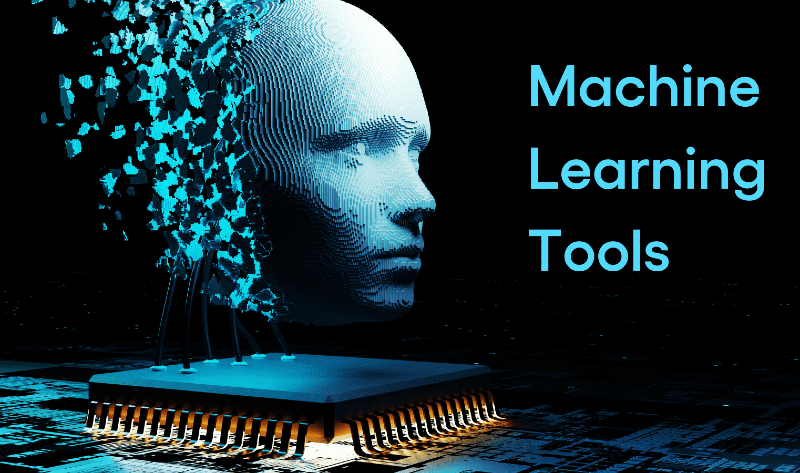Machine learning is a constantly expanding discipline that needs a wide range of tools and technologies to be successful. There are several machine learning tools accessible today, and choosing which ones to use can be difficult. In this blog, we will look at some of the best Machine Learning tools.
Table of Contents:
- What is Machine Learning?
- Top Machine Learning Tools
- TensorFlow
- Keras
- Scikit-learn
- PyTorch
- Pandas
- Apache Spark
- IBM Watson Studio
- Microsoft Azure Machine Learning
- Amazon SageMaker
- Google Cloud AutoML
- Conclusion
What is Machine Learning?
Artificial intelligence (AI) applications such as machine learning provide systems the capacity to autonomously learn from experience and advance without explicit programming. Machine learning algorithms develop a mathematical model utilizing sample data, also referred to as “training data” to produce estimates or choices with no explicit training.
Machine learning is a branch of data science. If you want to learn more about machine learning and how data science helped it evolve, there are several online resources available, such as tutorials, online courses such as a data science certification course, professional networks, seminars, etc. that may assist you in improving your skills in this subject.
Machine Learning has many applications like data mining, computer vision, credit card fraud detection, healthcare, etc. Many companies utilize Machine Learning for applications like filtering spam, offering product recommendations, detecting diseases, etc. In summary, Machine Learning uses algorithms and statistical models to analyze and learn from patterns in data without being programmed to perform specific tasks.
Top Machine Learning Tools
Let’s dive into the list of the top Machine Learning tools:
- TensorFlow
TensorFlow is an open-source library for machine learning. It was developed by the Google Brain team. It uses data flow graphs for building models. TensorFlow provides APIs in Python, C++, Java, Go, JavaScript, and Swift. It enables quick experimentation through flexible architecture and speeds up the training of models in GPU and CPUs.
- Keras
A high-level neural network API called Keras was created in Python and may be used with TensorFlow, CNTK, or Theano. It may be expanded and modular. Its main characteristics include: enabling quick and simple prototyping (through usability, modularity, and extensibility). Supports both recurrent and convolutional networks, as well as hybrids of the two. runs on the GPU and CPU.
- Scikit-learn
Scikit-learn is a free Python programming language and machine learning library. It provides many machine learning algorithms for tasks like classification, regression, clustering, dimensionality reduction, and model selection, implemented in a consistent API. Scikit-learn has tools for preprocessing data, feature extraction, and selection, selecting and tuning models, and evaluation. It is designed to interoperate with other Python libraries that manipulate and pre-process data, such as NumPy and SciPy.
- PyTorch
PyTorch offers two high-level features: tensor computing with GPU support (similar to NumPy) and deep neural networks. PyTorch has a central role in multiple Deep Learning frameworks. It has an imperative style, rather than the declarative style of other frameworks like TensorFlow. This makes PyTorch useful for research where odd neural network architectures are often tried.
- Pandas
Pandas is a popular data analysis library built on top of NumPy, a scientific computing package in Python. Pandas allows you to organize data into DataFrames, perform SQL-like operations, visualize data, and much more. Its tight integration with NumPy allows you to leverage its vectorized operations and linear algebra functions. Pandas is a very useful tool for data cleaning, manipulation, and preparation before modeling.
- Apache Spark
Apache Spark has a machine learning library called MLlib which allows you to build and tune machine learning models. Spark MLlib includes algorithms like logistic regression, naive Bayes, and k-means clustering, to name a few. Spark MLlib utilizes DataFrames, allowing you to construct pipelines and workflows.
- IBM Watson Studio
IBM Watson Studio is an interactive, collaborative environment where data scientists can work together to build and train machine learning models. It has drag-and-drop model building, tools for data exploration, and machine learning pipelines allowing rapid prototyping. Watson Studio integrates with open-source tools like Jupyter Notebooks, Apache Spark, and Scikit-learn. The platform is also deeply integrated with IBM Cloud providing various database, storage, GPU, and model deployment options.
- Microsoft Azure Machine Learning
Microsoft Azure Machine Learning is a cloud-based Machine Learning platform that allows data scientists and developers to quickly create and deploy ML models. It provides tools for data preparation, feature engineering, model training, and deployment. The fully managed ML services allow you to easily train and tune models using automated machine learning, embed ML into apps and processes, deploy models at scale, and monitor and manage models for maximum success.
- Amazon SageMaker
Data scientists and developers can rapidly and effectively construct, train, and deploy machine learning models at scale with Amazon SageMaker, a fully managed machine learning service. Each phase of the machine learning process has the hard work done for it. It provides tools to label and prepare your data, choose an algorithm, train the model, tune and optimize it for higher accuracy, deploy the model into production, and monitor how it’s performing.
- Google Cloud AutoML
Google Cloud AutoML is a robust machine-learning automation tool that allows users to generate unique models without a substantial understanding of machine-learning methods or programming. It takes advantage of Google’s powerful machine-learning capabilities to create high-quality models rapidly and effectively. The platform has an easy-to-use interface for creating, training, and deploying machine learning models, making it suitable for users of all skill levels.
Conclusion
Machine learning is a rapidly evolving field that offers several opportunities for both companies and individuals. With the correct tools and approaches, anybody can become adept in machine learning and utilize it to address a wide range of issues. Whether you want to build predictive models, analyze large amounts of data, or investigate innovative uses of artificial intelligence, there are a variety of tools available to help you get there.

